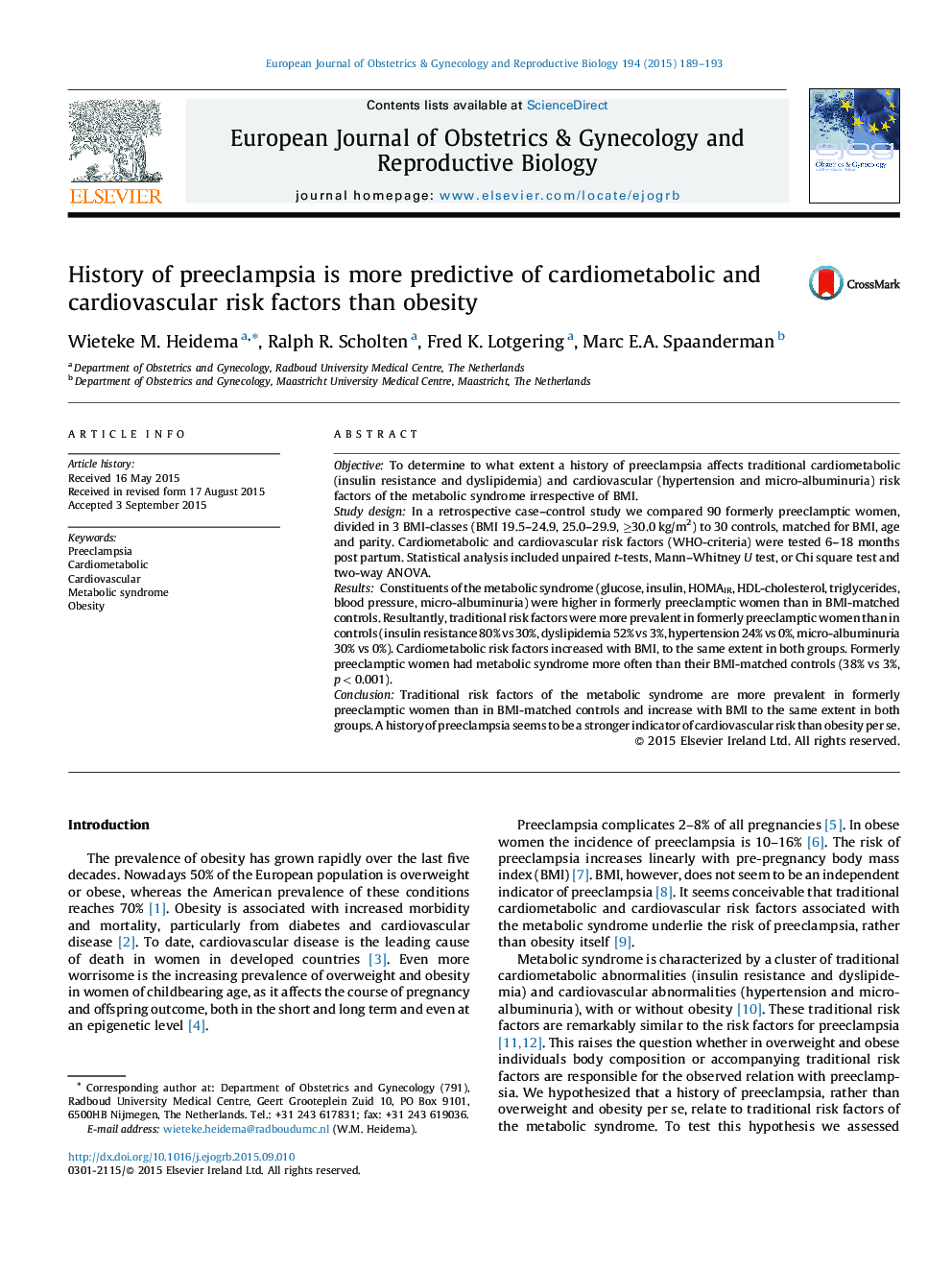| Article ID | Journal | Published Year | Pages | File Type |
|---|---|---|---|---|
| 6173102 | European Journal of Obstetrics & Gynecology and Reproductive Biology | 2015 | 5 Pages |
ObjectiveTo determine to what extent a history of preeclampsia affects traditional cardiometabolic (insulin resistance and dyslipidemia) and cardiovascular (hypertension and micro-albuminuria) risk factors of the metabolic syndrome irrespective of BMI.Study designIn a retrospective case-control study we compared 90 formerly preeclamptic women, divided in 3 BMI-classes (BMI 19.5-24.9, 25.0-29.9, â¥30.0 kg/m2) to 30 controls, matched for BMI, age and parity. Cardiometabolic and cardiovascular risk factors (WHO-criteria) were tested 6-18 months post partum. Statistical analysis included unpaired t-tests, Mann-Whitney U test, or Chi square test and two-way ANOVA.ResultsConstituents of the metabolic syndrome (glucose, insulin, HOMAIR, HDL-cholesterol, triglycerides, blood pressure, micro-albuminuria) were higher in formerly preeclamptic women than in BMI-matched controls. Resultantly, traditional risk factors were more prevalent in formerly preeclamptic women than in controls (insulin resistance 80% vs 30%, dyslipidemia 52% vs 3%, hypertension 24% vs 0%, micro-albuminuria 30% vs 0%). Cardiometabolic risk factors increased with BMI, to the same extent in both groups. Formerly preeclamptic women had metabolic syndrome more often than their BMI-matched controls (38% vs 3%, p < 0.001).ConclusionTraditional risk factors of the metabolic syndrome are more prevalent in formerly preeclamptic women than in BMI-matched controls and increase with BMI to the same extent in both groups. A history of preeclampsia seems to be a stronger indicator of cardiovascular risk than obesity per se.
